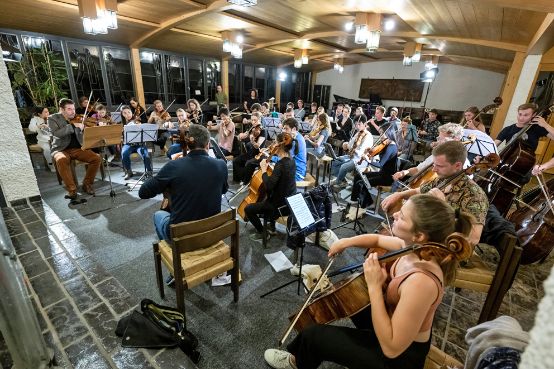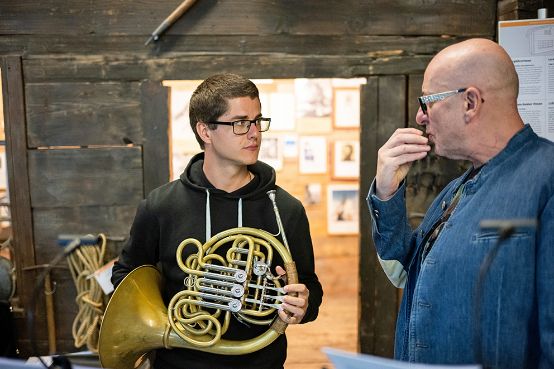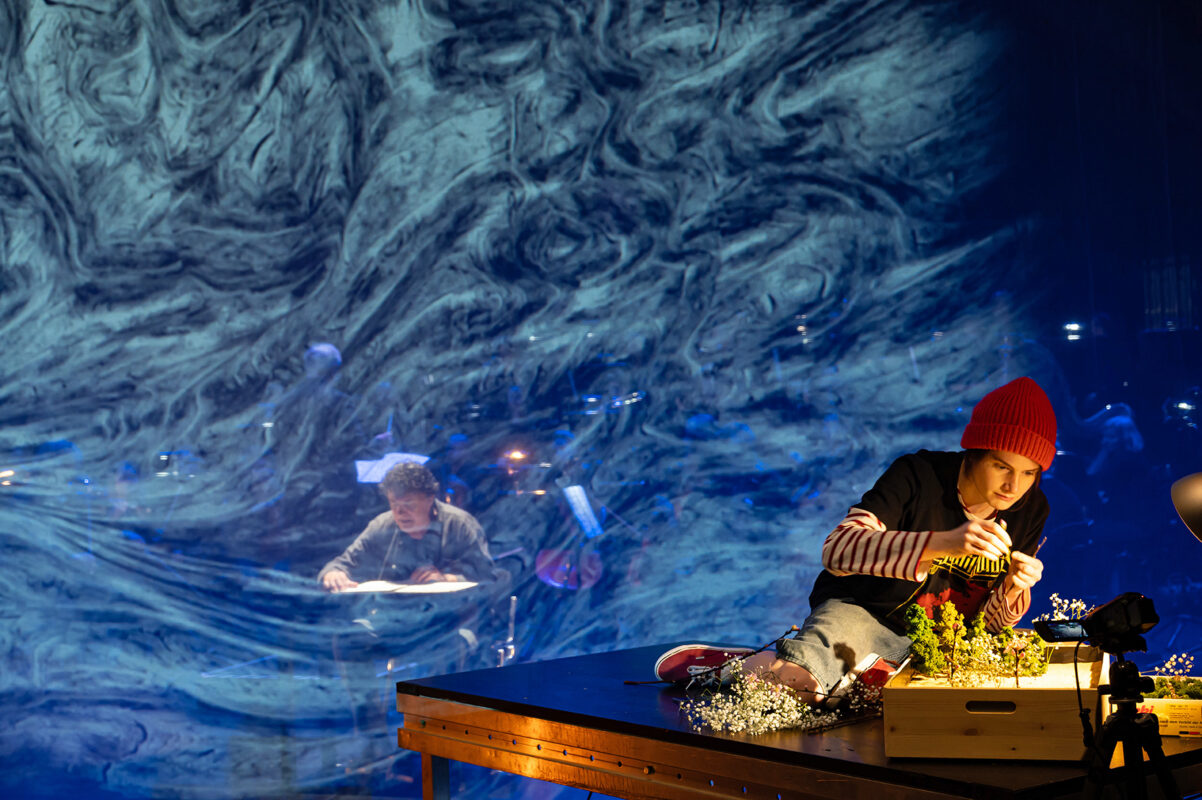From Handel to Rihm
The Academy, which is held annually in September in Zermatt by the Berlin Scharoun Ensemble, is highly sought-after and extremely demanding, as a visit to the venue shows.

It is one of the renowned master classes for young musicians, founded in 2005 and organized by the nine-member Berlin Scharoun Ensemble. "Zermatt Festival Academy"and it is as coveted as it is demanding. The management receives up to 500 applications from all over the world, from which the lucky ones are selected. This year, 33 have made it, including eleven from Swiss universities, four of which are Swiss nationals.
Horn player Marcial Holzer is one of them: "Zermatt is an academy with a festival, where work is done at a very high level, which is why I signed up," he says, describing his motivation, "it is a stroke of luck for me to be able to rehearse and play with the Scharoun Ensemble." The demands are high, both chamber music and orchestral pieces are rehearsed together with the Scharoun Ensemble in the Zermatt Festival Orchestra, across all stylistic periods.
-

Stefan de Leval Jezierski coaches Marcial Holzer.
Holzer equally appreciates the coaching of horn player Stefan de Leval Jezierski and the wind section in the orchestra by bassoonist Markus Weidmann: "It's not just the intensive rehearsal time and the performances that are extremely beneficial for me, but also being together with the other academy members," Holzer sums up.
Samples ...
A rehearsal of Mendelssohn's Symphony No. 1 gave us a good idea of what to expect. For once there was no conductor, the rehearsal was led by concertmaster Christophe Horak and Christian Poltéra, who was not present here as a soloist but as the cello section leader of the Zermatt Festival Orchestra. He replaced Claudio Bohórquez, who was on paternity leave.
Horak and Poltéra harmonized well in this rehearsal, which is no wonder, as "Christophe and I were already making chamber music together when we were 14," Poltéra said with a laugh after the rehearsal. It was indeed exciting to see how the two musicians, complemented by bassoonist Markus Weidmann, who instructed the winds, were able to transform an unruly, sedate Allegro di molto into a swirling, contoured Mendelssohn movement. The orchestra members effortlessly implemented precise articulation and dynamic differentiation.
"The young musicians are well prepared and extremely flexible," praised Horak after the rehearsal: "It's incredible fun. The freshness, enthusiasm and joy of the young people are infectious." The Scharoun ensemble always makes suggestions in advance as to what could be played, and the Academy management then makes the final selection of works to be rehearsed and performed in front of an audience.
... and give concerts
The result of the rehearsals could be heard on September 13 in the English Church: It was a colorful program with works by Hindemith, Debussy, Rihm and Blanc, which also placed high demands on the audience. In Hindemith's sonata for four horns, one also encountered Marcial Holzer again. The harmony in the slow fugato was just as successful as the frequent changes of meter in the second movement "Lebhaft".
The sonata for flute, viola and harp by Debussy was particularly successful, in which two young Swiss talents, violist Johannes Moehrle and harpist Tjasha Gafner, shone. The way in which Moehrle, coached by Micha Afkham, was able to harmonize with the excellent flautist Alexandra Gouveia and then again with the harpist was a feast for the ears. After that, Rihm's sextet, which was highly difficult both programmatically and interpretatively, fell somewhat short.
The interpretation of three movements from the Septet for clarinet, bassoon, horn and strings by Adolphe Blanc was carried by enthusiasm. The work, darkly colored by the double bass, demands a great deal from the performers. Sophia Eschenburg's violin playing seemed somewhat pointedly exposed for this reason. Meanwhile, Rafal Kleszcz on the clarinet was a little too dominant with his brilliant runs, although he had two excellent partners at his side in Alexander Rauch on bassoon and Helene Fleuter on horn.
The fourth Swiss in the group was Silvan Irniger, a violinist who studied in Zurich with Andreas Janke and had also received a letter of recommendation for the Academy from him, as the 24-year-old explained. Irniger played in Enescu's string octet and Farrenc's nonet as well as in the orchestral concerts.
We met him at a rehearsal of Handel's Suite for trumpet, strings and basso continuo in D major. The conductor was Stanley Dodds, and the soloist was Guillaume Jehl, principal trumpeter of the "Berliner", who had studied baroque trumpet at the Scola Cantorum Basiliensis. And here, too, it was astonishing how Handel's music gained contours after Dodd's instructions, the phrasing became shorter and more concise. Irniger clearly enjoyed rehearsing and said, "the changes of style are simply part of this Academy". He spoke and continued the rehearsal with Prokofiev's Symphonie classique continued.







